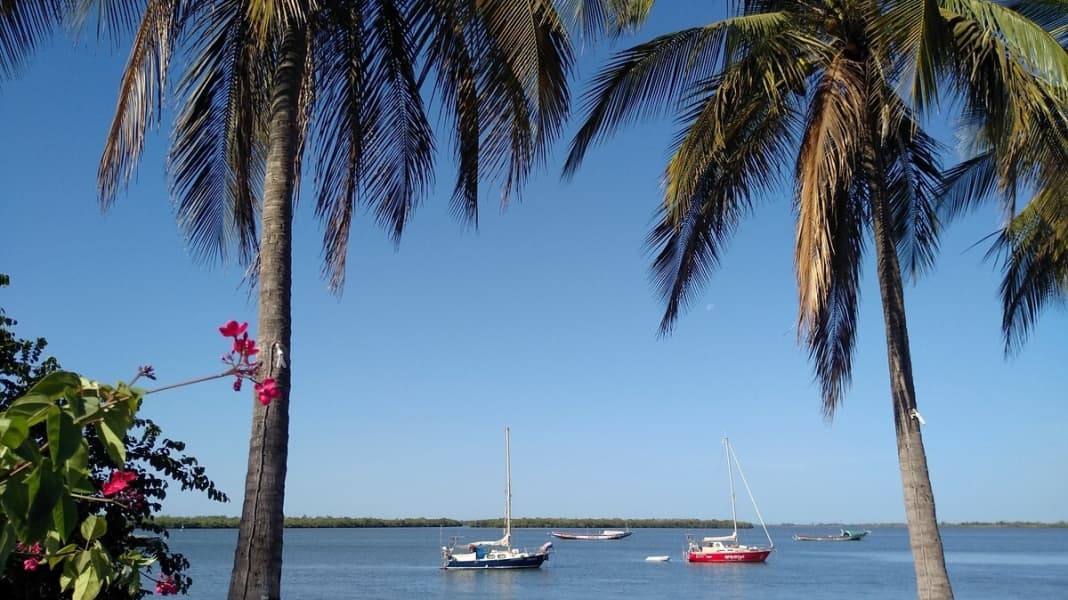
Canaries, possibly Cape Verde, Caribbean - this is the usual route among Atlantic sailors, which is rarely questioned. However, there are sailing areas on the west coast of Africa that have much more to offer and are rarely travelled to. Riki and Martin Finkbeiner are travelling off the beaten track with their "Aracanga" and report from a fascinating country that is virtually predestined for water sports enthusiasts. And where, in addition to breathtaking flora and fauna, they experience hospitality that is otherwise only known from the Pacific: Senegal.
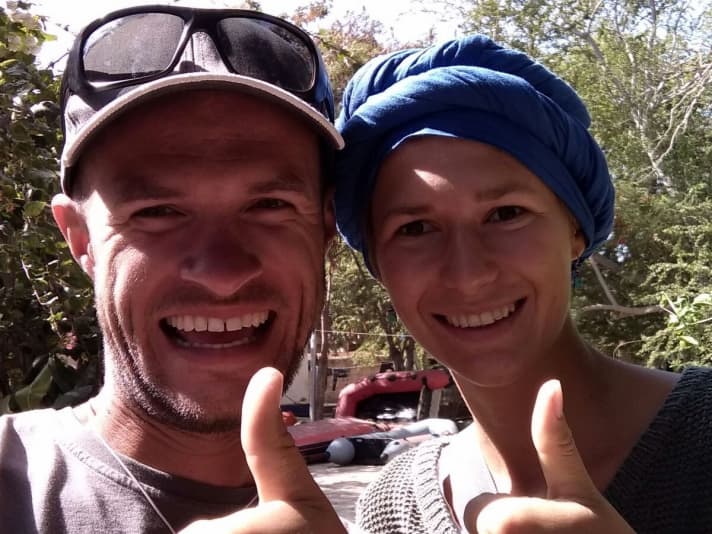
When we planned and prepared this trip, our credo was to make as few plans as possible so that we could always make spontaneous detours. Nevertheless, a few individual destinations were fixed from the outset. Mostly places that I had heard about on my first circumnavigation and didn't have the time to visit at the time.
One of these places is The Gambia, Africa's smallest country on its west coast. It is known for its golden sandy beaches, which are considered the most beautiful on the continent, and the mighty Gambia River, on which you can travel almost 200 nautical miles inland. Hippos, crocodiles, monkeys, flocks of birds and many other exotic animals live here.
And planning our detour to The Gambia automatically brings up another country that surrounds The Gambia on all sides: Senegal. As there is virtually no information for sailors about the country, we decide to sail to Dakar first. On the way there and in Dakar itself, we want to gather as much relevant information as possible before we decide to sail to more remote regions of the country.
This tactic pays off, as we meet a few other crews on the way, almost exclusively French, who have already been to Senegal. Those who had set course for Casamance after clearing in at Dakar tell us enthusiastically about the south of the country. And when asked about safety in the former rebel territory, the answer is always the same:
Nothing has happened for many years and the region is considered safe.
French sailors know this, as the country has close ties with France due to its history. For us Germans, unfortunately, the former rebel territory still has a bad reputation for robbery and kidnapping. After everything we have learnt about Casamance, there is no question in our minds: we have to go there.
500 nautical miles towards
The detour to Senegal has to be earned. Because another reason for the few cruising sailors in the region is certainly that you have to grit your teeth and sail against the trade winds. Once we have our exit stamps from Cape Verde in our passports, we plot our course eastwards. It's about 500 nautical miles from Mindelo to Dakar. We therefore allow five to seven days for the journey with our 30-foot "Aracanga".
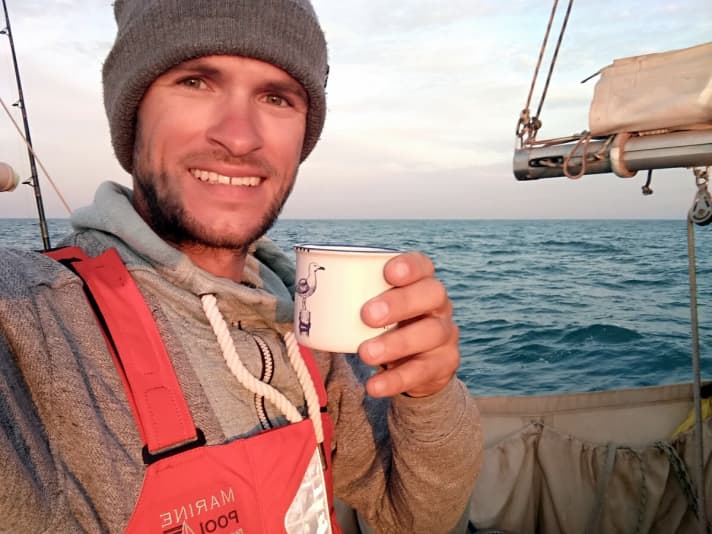
The wind is blowing strongly at around 20 knots, but not excessively so. However, as we were sailing against the wind and waves, we were really shaken up and our yacht had to contend with a lot of leaning and hard bumps in the deep wave troughs. However, we are rewarded for this with some good miles and make over 120 nautical miles during the first three days with the main and jib reefed. This corresponds to an average speed of over five knots, despite several doldrums between the Cape Verde islands.
However, we reduce life and all activities on board to a necessary minimum during this time. We don't feel like reading, taking photos or even listening to music. During the night watches, we doze below deck with the egg timer set to 15 minutes, then take a look round, keep an eye out for other ships and check the course.
Fright in the night
On the second night, during Riki's watch, when the boat brakes abruptly in a wave trough, there is a loud bang on deck and then the unpleasant sound of a loose steel cable being whirled around. We immediately take all the power out of the sails and light up the deck. With the headlamp, we can't see much at first and suspect a broken lower shroud, but then realise that our baby stay has torn out of the terminal.
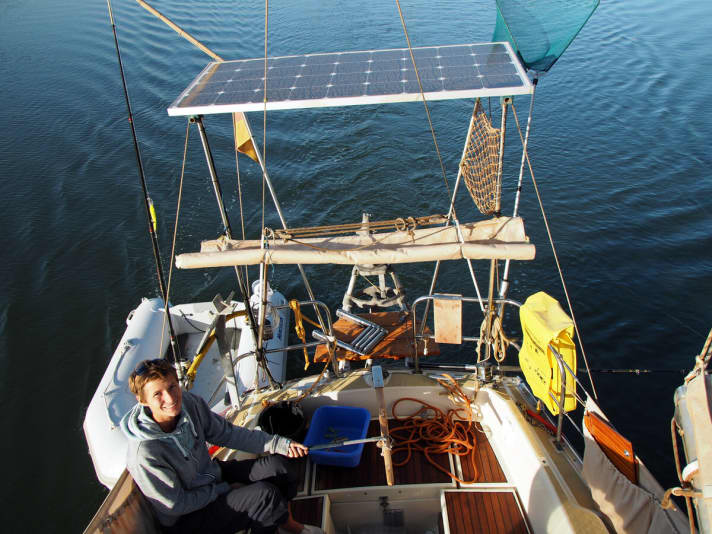
For the rest of the crossing, we rigged a temporary baby stay with the toppnant and took some pressure off the sails. Before we set sail six months ago, we replaced all the stays and shrouds. However, a measuring error crept in when calculating the new baby stay, which is why we shortened the stay and fitted it with a screw terminal. We screwed it together carefully at the time and also made sure that all the wires of the steel cable were correctly positioned when screwing it together. But we probably made a mistake somewhere. Perhaps it was screwed together too tightly or not tightly enough, as a few of the wires of the baby stay in the terminal were torn and the remaining wires were pulled out.
In any case, nothing worse happened and we have a new item on our to-do list.
After the third day, the wind drops significantly, the waves recede to around one metre and sailing is fun again. Although we are only travelling at around four and a half knots, the ship is moving at a pleasant pace.
The closer we get to the African mainland, which we can already smell but not yet see, the more the wind drops. About twenty miles from the coast, we are only travelling at a speed of just over one knot, so we decide to start the engine and chug the last few miles to Dakar under power.
Fishermen as the welcoming committee
Off the coast, there are a few fishermen in their long, elegant and colourful pirogues. Two of them head straight for us at high speed, and while we watch them somewhat sceptically, they come alongside, ask for drinking water and want to sell us freshly caught tuna. Tempting, but due to a lack of Senegalese cash, we have to decline with thanks. Laughing and waving, the two of them leave, and a few hours later we are motoring in complete darkness southwards around the large peninsula of Dakar, the westernmost point of continental Africa.
After looking at the nautical chart, we decided to motor through the bay to the anchorage in the dark. It is shallow and full of shallows and wrecks, but reasonably well buoyed and charted. However, you can't always rely on the beacons actually working. The bay is also full of fishing boats, nets and buoys, most of which are not illuminated.
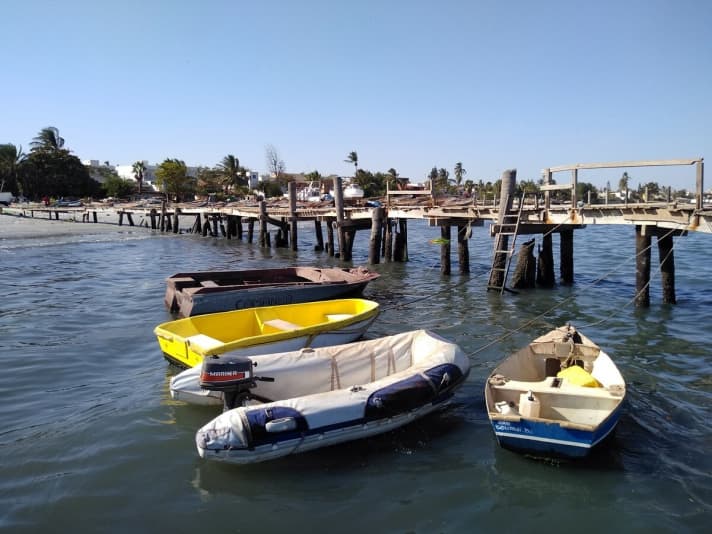
At least the fishermen draw attention to themselves with a torch or laser pointer so that we can easily avoid them. We have minimised our speed so much that we can also avoid the fishing buoys for a short time. After two hours, we arrive at the back of Dakar in the Hann district, where the local yacht club CVD is located and we can anchor protected from the wind and waves.
However, we don't see any boats, even though the water is only a few metres deep and we can clearly see the shore. Only after some searching with binoculars and spotlights do we find the anchorage. At midnight on the dot, we anchor in four metres of water in front of a handful of other sailing boats. Arrived.
The anchor beer tastes particularly good after this crossing, and we look forward to a quiet night without waking and without waves.
The night is not quiet, but the rhythmic African drums, mixed with dusty pop songs and what sounds like muezzin singing, give the arrival a special character. As we fall asleep, we look forward to getting to know this foreign world over the next few days...
Welcome to a foreign country
Dakar is the only port of entry in Senegal. This means that every boat has to come here to undergo the clearance procedure. Sailors are warmly welcomed at the local yacht club, the CVD. The club exudes the slightly ramshackle charm of more glamorous times, and very few of the local yachts anchored here that have not yet run aground can still be described as seaworthy. On the other hand, the welcome at the club is all the more friendly and the range of services for visiting yachts is much more extensive than one would expect at first glance.
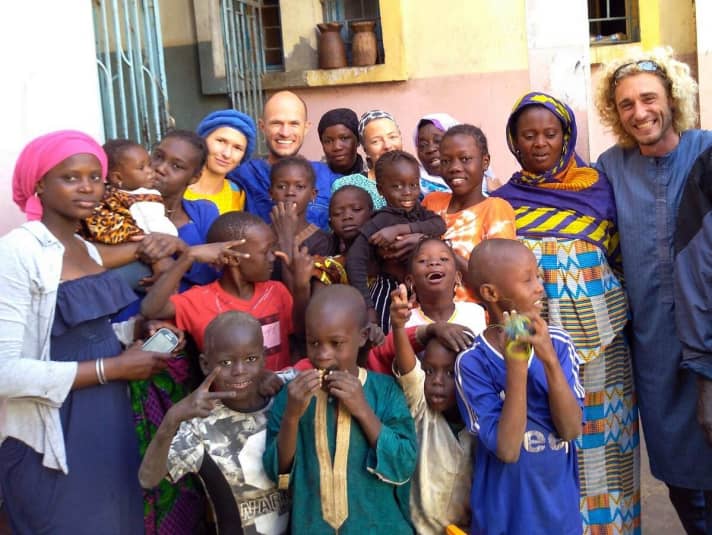
The capital of Senegal is difficult to put into words. Even after the first few days, a colourful potpourri of impressions, experiences and adventures buzzes in our heads. Around three million people live in the metropolitan region. Senegal, which stretches north to the foothills of the Sahara and south to the tropical rainforest, was colonised by France until its independence in 1960, and French is still the official language today. Another consequence: Senegal is a stable and democratic state and has one of the highest life expectancies in Africa.
What impresses us again and again in Dakar from the first step ashore is the hospitality and helpfulness of the people. We feel absolutely safe day and night, and only very rarely do we have to pay "tourist prices". The invitations for tea, coffee and lunch are so numerous that we sometimes have to turn down invitations in order to see more than just Dakar before our visas expire.
Never-ending hospitality
It is difficult to do the most necessary errands alone, as we are travelling from appointment to invitation and our plan for the day is gone after breakfast at the latest. The lady who sells us the delicious baguettes invites us to her extended family's home for lunch.
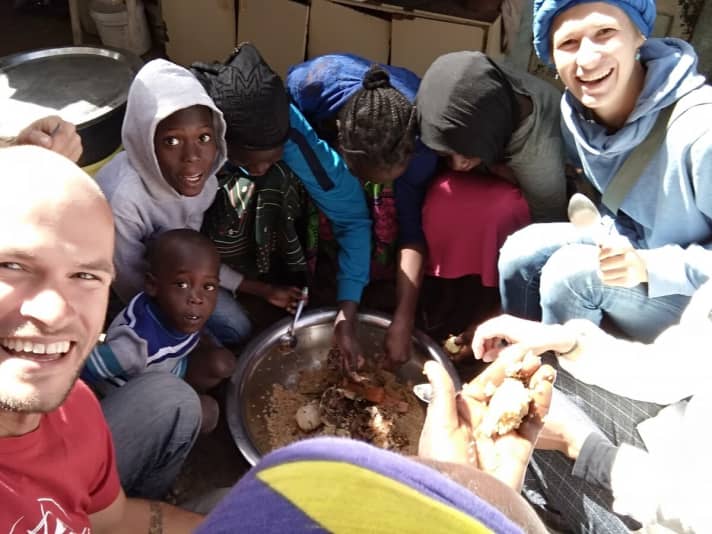
And extended family really means extended family here. Around 35 adults live in the large house near the harbour, and we're not sure if anyone has an overview of how many children there are here. The house has several floors, with many doors leading off the corridors where the families live. However, most of the life takes place in the inner courtyard.
We are introduced to the whole extended family and shown through each of the countless rooms to greet all the residents, from the newborn to the great-grandmother - and we are just as happy to be invited as our host family.
There are several large bowls of different dishes to eat, which are placed on the ground in the courtyard. Together with a few children and giggling young women, we tuck into one of the bowls of couscous and fish. One day after another goes by here in the city and it is not easy for us to say goodbye. But even more than the city life of Dakar, the Casamance with its widely ramified river delta attracts us.
River trip
Casamance is the name of the southernmost region of Senegal and the river of the same name. The region borders Guinea-Bissau to the south and Gambia to the north. A few years ago, the quest for autonomy led to political unrest and fighting between rebel groups and the government. Today, the region is considered safe, and in recent years, a tentative tourism industry has developed again.
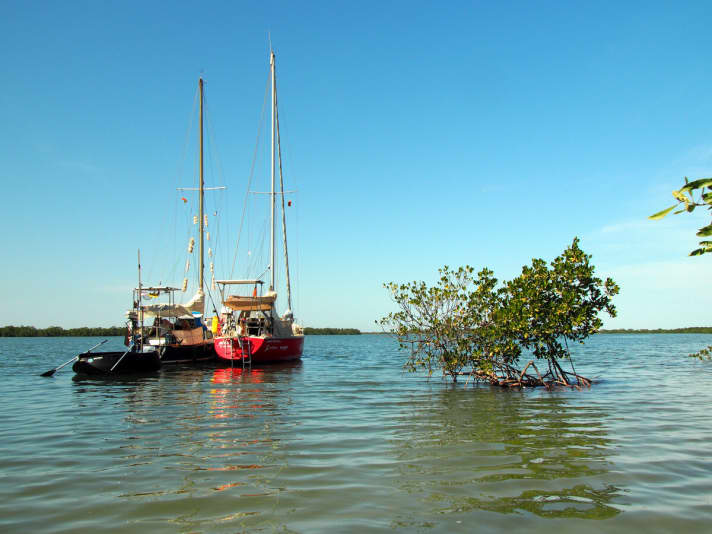
There are few other sailors here in Casamance and only a few tourists. At our last anchorage, we met a Belgian couple who have been travelling in the region on their large catamaran for many years. They confirmed our previous impression and told us a short anecdote about their trip: even if they are not on board for the whole day, they leave everything open and nothing has ever gone missing. Quite the opposite: when a child in the village recently found money in an envelope, he gave it to his parents, who in turn gave it to the chief, who then asked the
who then asked the sailors to come and ask them if the envelope of money belonged to them.
So we continue to feel welcome. Every time we go ashore, we meet new people and make new friends, which means we quickly build up a network and everyone keeps an eye on each other and our boat. If something was stolen, it would be a disgrace for the whole village.
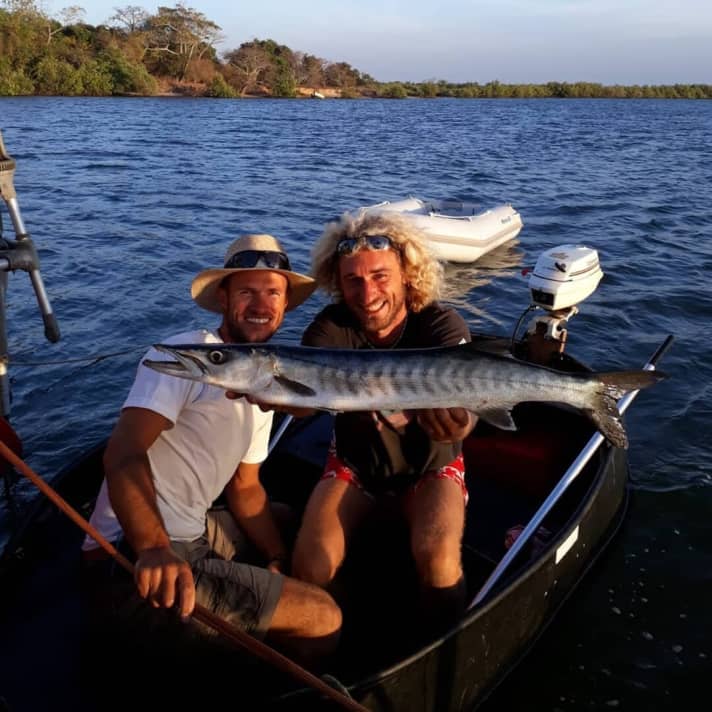
For sailors, the river offers an extensive network of side arms and secluded anchorages surrounded by lush green mangroves and palm trees. The local population, the proud Djola people, are extremely hospitable and helpful.
This is also the reason why we decided to extend our stay in West Africa and spend less time in the Caribbean instead. We can find everything we are looking for here. At the same time, life is very cheap. We pay the equivalent of around four euros for lunch (usually rice, bulgur or couscous with fish) plus four coffees.
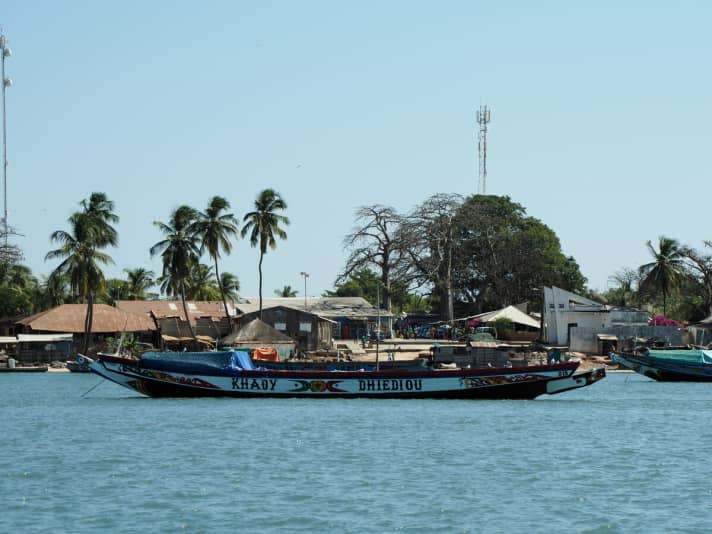
There are around 130 nautical miles to sail from the capital Dakar to Casamance. Although the entrance to the river is shallow, it is well buoyed and can be done safely with a rising tide. We allow enough time for the journey from Dakar, as the wind here is often very light. Nevertheless, we travelled much faster than planned and only sailed with a small sail and the handbrake on.
At eight o'clock in the morning, we head through the well buoyed canal into the Casamance river delta, where we are checked by four friendly young
where we are checked by four friendly young marines as soon as we enter. They want to see our passports, boat papers and customs documents from Dakar and then let us continue the remaining few miles to our destination in the village of Elinkine without any problems.
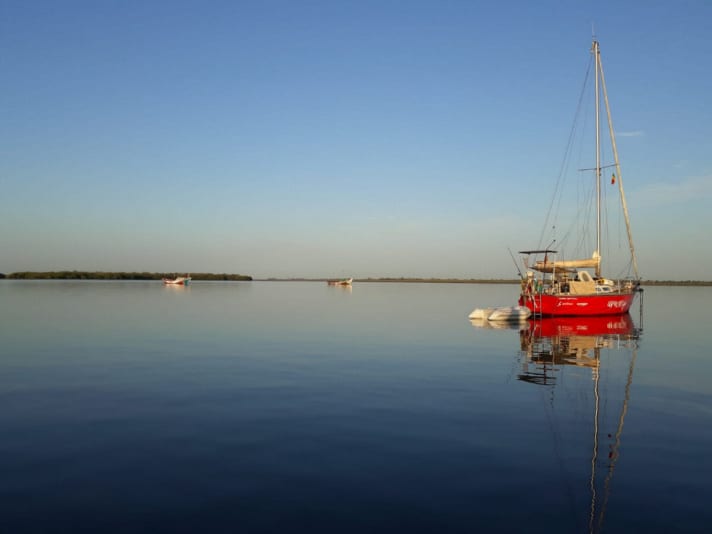
We fell in love with the Casamance right from the start, even the first few miles on the river
were like travelling into another world.
Lush green mangrove trees line the banks on all sides of the branching river delta, interrupted now and again by small sandy beaches with different types of palm trees or a small village with palm-covered huts. Behind the mangroves you can see the mighty baobab trees that are so typical of Africa. Self-carved dugout canoes and long, elegant pirogues can be seen travelling along the river arms.
Carefree day in the "semi-detached house"
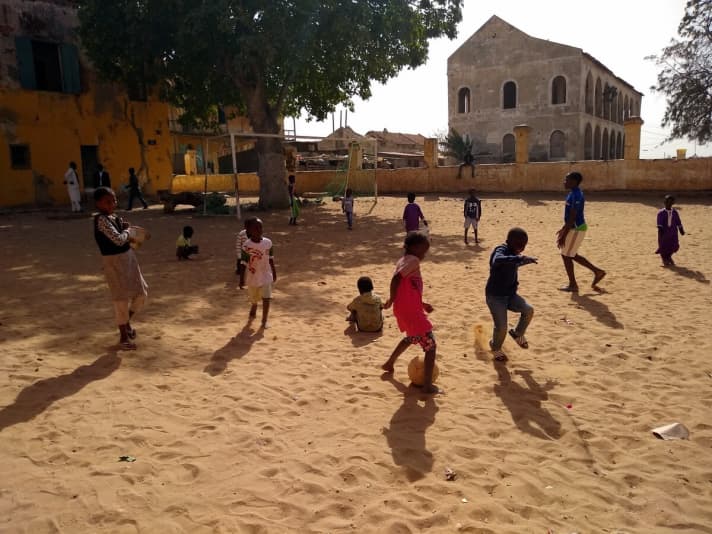
Elinkine is beautiful, and here too we are approached on the street and invited to drink palm wine together. Nevertheless, we long for a quiet anchorage surrounded by nature and find one a few miles further south.
On a small beach in the middle of the mangroves, we tie up alongside our friends from the "Streuner", with whom we have been travelling together since Morocco. Now we're practically living in a semi-detached house.
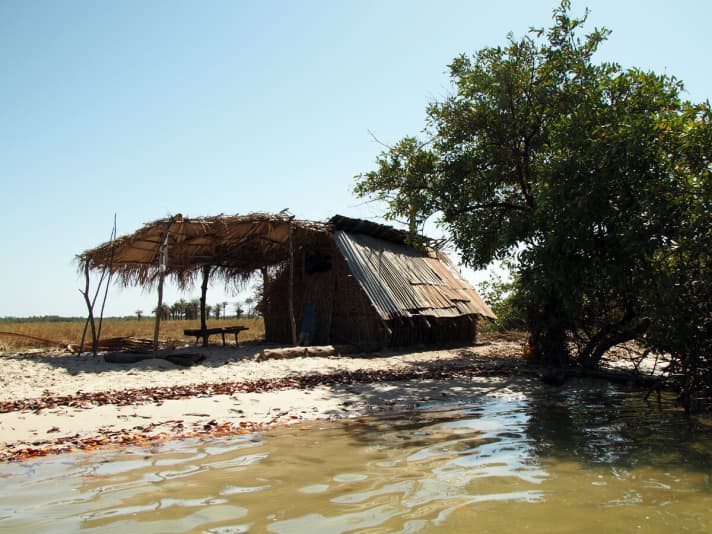
The next few days pass without much happening. We take short walks along the shore, where the floodplain is used for rice cultivation, go swimming and enjoy the peace and seclusion after the hectic days with the many invitations. We collect and eat oysters, catch perch and barracuda, and only occasionally does a fisherman paddle past in a dugout canoe to greet us with a hearty "Kassumai" on Djola.
At our next anchorage, the village of Ehidj, there is a small well that provides clean drinking water from a depth of ten metres. There is plenty of water available, so we are offered the chance to top up our tanks. It's a lot of work lugging the heavy canisters to the well and back on board, but that's just as much a part of it as the pleasant side.
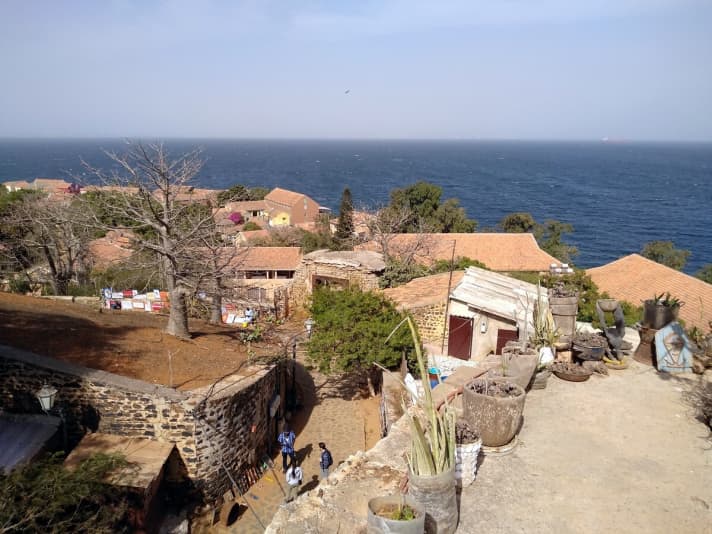
Life here in Casamance is very simple, but there is nothing lacking. There is enough water and enough to eat, albeit not in the variety we are used to at home. If there are tomatoes, tomatoes are sold, and if there are oranges, oranges are sold, the supply determines the menu.
In the village there is a family with a henhouse where you can buy eggs or freshly slaughtered chicken, and right next door there is a small garden where you can buy salad and various vegetables. And fresh really means fresh here, whether vegetables or meat.
We like it here and are pleased with our decision to stay. The Caribbean can wait.
Further information, pictures and articles about the voyage of the "Aracanga" at Ahoy.blog.


